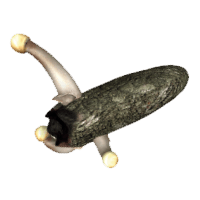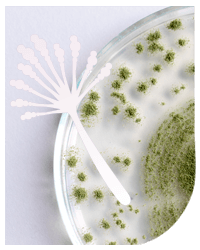Carlos López Coello1, Juan Carlos del Río2, Enrique Morales Balderas1 and Gabriela Gómez Verduzco1
1Department of Avian Medicine and Zootechnics, FMVZ-UNAM, Mexico
2School of Advanced Studies, Cuautitlán-UNAM, Multidisciplinary Research
Unit, laboratory 14 “Food, Mycotoxins and Mycotoxicosis”
One of the major challenges faced by intensive animal production and public health is the high incidence and prevalence of fungi and their metabolites in grains and oilseeds in animal feed.
This problem is not recent, as during the Middle Ages in Europe one of the first cases of mycotoxicosis reported was attributed to the consumption of rye contaminated with Claviceps purpurea, causing the disease known as “St. Anthony’s Fever” which is characterized by a high incidence of necrotic lesions, nervous symptoms and high mortality in infants.
⇰ Its treatment was linked to rituals and religious ceremonies, and today this disease is still present, being known as ergotism.
Nowadays, some questions arise that deserve an answer, such as:
- ⇰ How far are we from those “magic and religious treatments”?
- ⇰ Are incidence and prevalence in mycotoxin reports consistently and accurately analyzed and correlated with the real situation in each case?
- ⇰ If grain cleaning is an efficient preventive measure, why hasn’t this practice spread?

Mycotoxins are toxic substances that alter cellular metabolism and cause tissue damage in the exposed body.
However, the presence of micelles is not necessarily linked to the production of mycotoxins.
It is now known that mycotoxins are not necessarily only the defence
mechanisms of toxigenic fungi. They are also normally produced and eliminated as a result of their metabolic activity and their production increases under stress.
The severity of the clinical under involving tissue lesions and metabolic disorders is influenced, among other aspects, by:
- ⇰ Species affected
- ⇰ Mycotoxin/s present and its/their concentration
- ⇰ Exposure time and its interactions
All these aspects lead us to reflect upon:
 How do tissue injuries and metabolic effects occur and how are they treated?
How do tissue injuries and metabolic effects occur and how are they treated? What are the criteria for the application of preventive and/or control measures?
What are the criteria for the application of preventive and/or control measures? Can we treat the tissue injury while ignoring the metabolic disturbance to restore health?
Can we treat the tissue injury while ignoring the metabolic disturbance to restore health?








 Micotoxicosis prevention
Micotoxicosis prevention